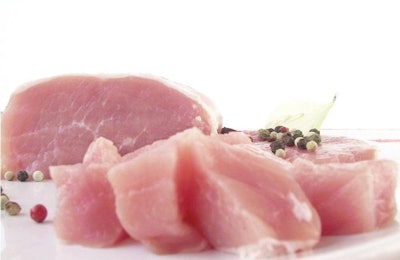
This article appears in the November/December issue of Pig International. View all of the articles in the digital edition of this magazine.
Analyzing global pig meat trade through the lens of all four country development group classifications shows patterns not often studied.
The four country development group (CDG) classifications are:
- LLDC: least developed countries
- NIC: newly industrialized countries (or threshold countries)
- OIC: old industrialized countries
- LDC: less developed countries
The data show that 32.8 percent of the world population lived in the least and less developed countries. They contributed only 0.7 percent to global pig meat exports but 9.6 percent to global pig meat imports. The imbalance in global pig meat trade becomes obvious when considering that only 15.2 percent of the world population lived in the old industrialized countries and that they contributed 92.4 percent of global pig meat exports and 68.2 percent of global pig meat imports. The comparison of the data reflect the differences in intensity of production, preferences of meat types and the wide variety in self-sufficiency rates.

World population is concentrated in newly industrialized countries, followed by less developed, old industrialized and least developed countries, respectively.
Dynamics in pig meat trade from 1993-2013
The global export volume of pig meat increased from 3.2 million tons in 1993 to almost 10.4 million tons in 2013; an increase of more than 220 percent. The high relative growth rate shows the growing importance of pig meat as a protein source for a fast-growing population. A closer look at the dynamics reveals old industrialized countries contributed 94.8 percent to world growth of pig meat exports, whereas the newly industrialized countries contributed only 5.7 percent. The export volume of the less developed countries decreased and that of the least developed countries was negligible.

The high relative growth rate of global pig meat exports shows the growing importance of this protein source.
The old industrialized countries gained 5.3 percent of global pig meat exports in the time period analyzed while the less developed countries and newly industrialized countries lost 2.7 percent of pig meat exports and 2.6 percent, respectively. Only 9.2 percent of global pig meat was traded in 2013 in contrast to 13.3 percent of chicken meat in the same year.

The old industrialized countries continue to dominate global pig meat exports.
In contrast to exports, the least and less developed countries played a larger role in global pig meat imports. In 2013, they together shared 9.6 percent of the global pig meat import volume. Imports also grew considerably in the newly industrialized countries and reached a share of 22.2 percent of globally imported pig meat. The old industrialized countries were also in a dominating position in pig meat imports with a contribution of 68.2 percent.

The least and less developed countries played a larger role in global pig meat imports, compared to exports.
From 1993 to 2013, the old industrialized countries lost 18.6 percent of their share of global pig meat imports. All other groups gained shares in the global pig meat import volume from 1993 to 2013; that of the newly industrialized countries increased by 13.3 percent and that of the least and less developed countries by a combined 5.3 percent.

From 1993 to 2013, newly industrialized countries experienced the largest increase in pig meat imports.
Countries with the top export, import share increases
Almost 55 percent of the global pig meat export volume increase from 1993-2013 can be attributed to Germany, the U.S. and Spain. The top 10 leading countries account for 90.6 percent of the global pig meat export volume increase. The development of Germany‘s exports is remarkable given that in the 1990s Germany had a negative balance of pig meat trade. Seven of the 10 countries with the highest increase in pig meat exports are located in Europe, and all of the top 10 countries are part of the old industrialized countries group.
Compared to exports, the 10 countries with the highest global pig meat import volume increase shows regional concentration was much lower. While the top 10 exporting countries shared 90.6 percent of global export growth, the top 10 importing countries accounted for only 62.1 percent of global growth. The number of countries with a production surplus is much smaller than those with a supply deficit. Four of the 10 countries with the highest increase in imports were located in Asia, five in Europe and one in North America.

Almost 55 percent of the global pig meat export volume increase from 1993-2013 can be attributed to Germany, the U.S. and Spain.
Current status and forecast of global pig meat trade
The old industrialized countries, despite having lost shares in exports and imports to the newly industrialized and less developed countries, are still dominating global pig meat trade. This is due to very efficient production systems and a high surplus over the domestic demand in several European countries, as well as in the U.S. and Canada.
In the newly industrialized countries, imports grew considerably from 1993-2013 — a result of the increasing demand in several Asian countries and the Russian Federation. Pig meat trade by the least developed and most of the less developed countries are still comparatively unimportant. This is due to the unfavorable climatic conditions in the inner tropics and religious taboos in countries with large Islamic populations. Although the trade volume of pig meat may increase in the coming decade due to growing demand in Asian, African and Latin American countries, the trade volume gap between pig and poultry meat will become wider since chicken can also be consumed in countries with large Islamic populations.
Read more: World meat and poultry trade continues to set records

















